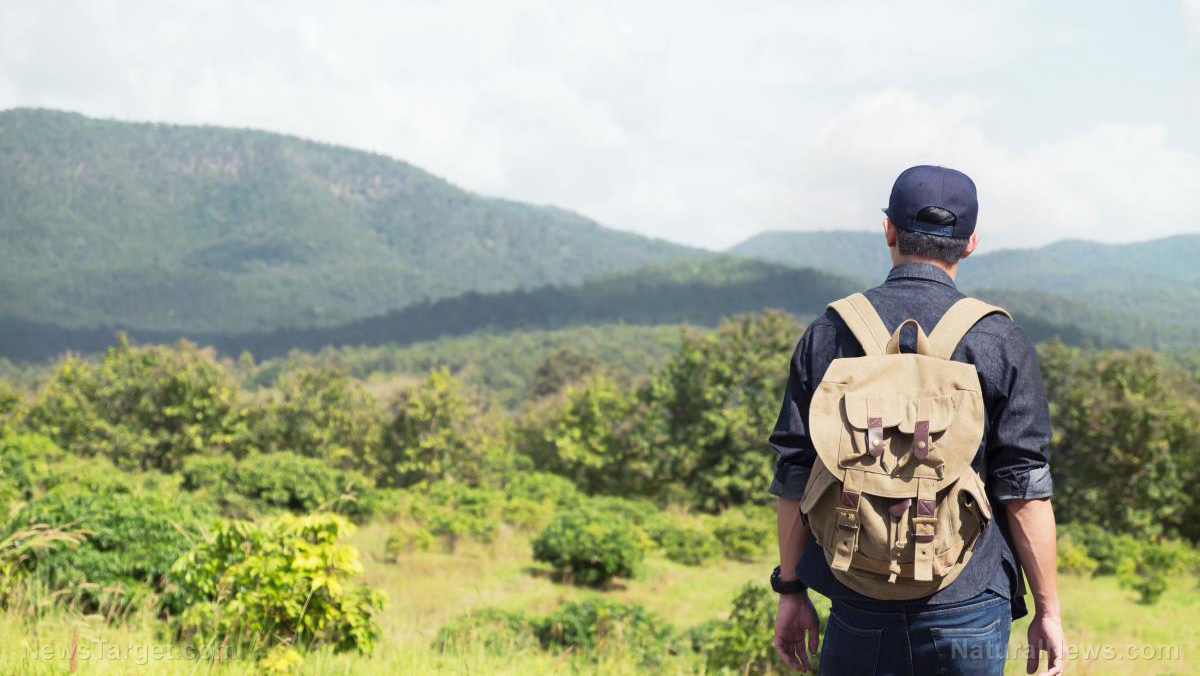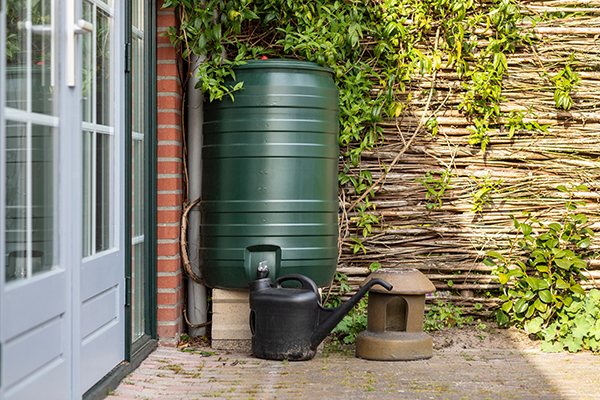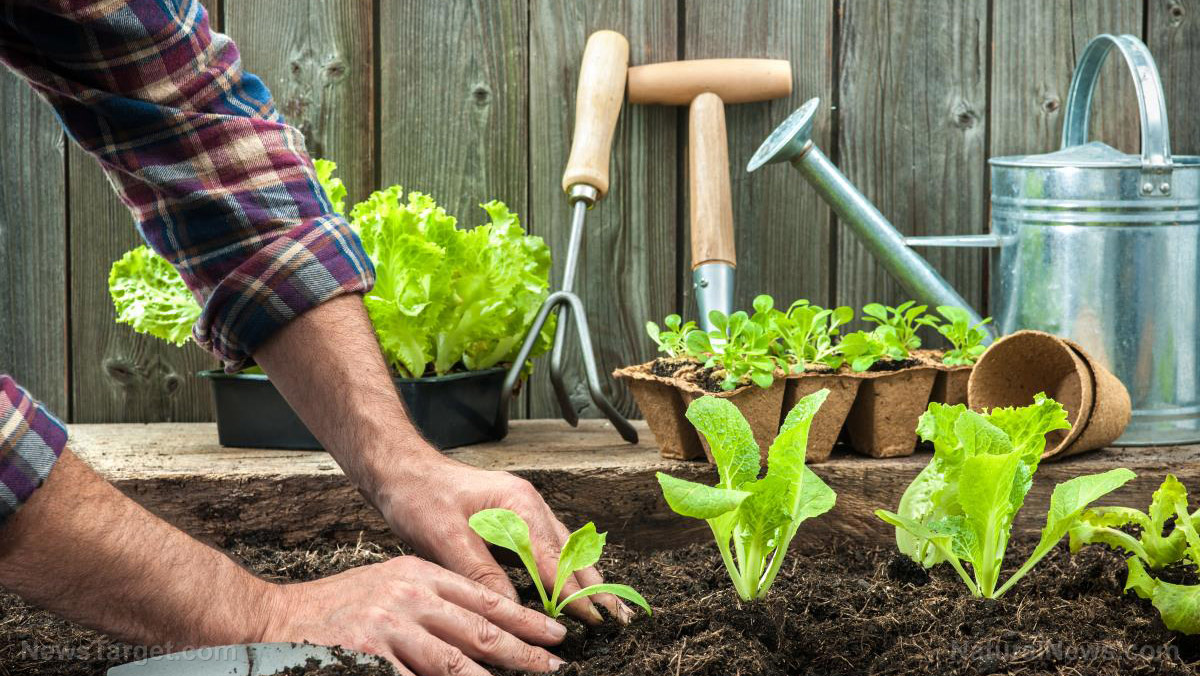Air, shelter, water and food: Master the survival rule of 3s so you can thrive when SHTF
04/07/2023 / By Zoey Sky

Before disaster strikes, learn the survival rule of threes so you can prioritize your survival needs.
The rule covers four basic survival requirements: Air, shelter, water and food. Memorize this basic rule so you can make quick decisions about survival tasks when every second counts. (h/t to TruePrepper.com)
Prepper basics: The survival rule of threes
The survival rule of three, or “rule of threes,” is a well-known rule that describes the basic survival rules using the number three.
According to the rule, you can survive:
- Three minutes without air
- Three hours without shelter
- Three days without water
- Three weeks without food
The order of these needs determines what you should prioritize in a survival situation. First, you need to be able to breathe freely. Next, you must have a shelter to protect yourself from the elements.
You will need to find water. Last, you will need to forage or hunt for food.
The survival rule of threes seems simplistic, but it can help you make split-second decisions in a survival situation. This can help save your life when time is of the essence.
Three minutes without air
Even the most experienced prepper can’t survive very long without air.
Oxygen is the key ingredient that you inhale, circulate through your bloodstream, and is used to power your cells. Since it is crucial to your function and survival, you also need to learn first aid.
One of the first things you learn in CPR is the ABC priorities:
- Airway – Check if anything is blocking air from getting into the patient’s lungs, like the tongue or a foreign object.
- Breathing – Check for signs of breathing. Look for the chest rising, listen for breathing noises and feel for breath movement.
- Circulation – Check the patient for a pulse.
Air is involved in all of these and it sustains your life. Any permanent interruption to your breathing can result in death.
Three minutes may not seem like a long time, but it is a general guideline.
Holding your breath underwater works differently than when you are on land. Humans have an uncommon reflex that makes it easier to hold their breath underwater, and this helps you avoid drowning.
Medical experts think irreversible brain death will occur within 10 minutes if you are unable to breathe or receive medical assistance.
The survival rule of threes also highlights the importance of having CPR knowledge and knowing how to do the Heimlich maneuver.
Three hours without shelter
If you don’t have time to build a literal bushcraft shelter, this category can cover other things that can protect you from the elements, such as:
- Bivvies
- Campfires
- Clothes
- Makeshift shelters
- Shoes
- Sleeping Bags
- Tarps
- Tents
- Umbrellas
- Your home
Exposure is the leading cause of death in the wilderness, especially since extreme heat and cold can have serious side effects on your body.
An umbrella or a campfire may not be the first thing you think of when the topic of shelters is discussed, but they can also help protect you from the elements. In the case of a fire, they can also help save your life.
In the same way, clothes act as a barrier between your body and the elements. If you ever lose your survival gear after SHTF, you need to get creative if you need shelter but don’t have any equipment.
Here are some shelters that you can build using only materials found in the wilderness:
Leaf mound hut
If you can’t find other materials aside from a ton of leaves, you can use them for insulation.
In temperate woodland environments, use leaves to insulate temperature, with your body acting as a heater. Capture that heat to stay warm.
Crawl into a mound of dry leaves to stay warm when SHTF.
To build a leaf mound hut, completely insulate your body from the ground so your body heat isn’t conducted away from you into the cold ground. While a leaf mound hut isn’t as comfortable as modern sleeping bags and blankets, it can help save your life if you are stuck in the wilderness in winter.
Get a lot of leaves or grass. Make sure the insulating material you collect and build your shelter with can surround you at least to the depth of your arm.
A-frame shelter (Debris hut)
An A-frame shelter (Debris hut) shelter has a little more structure and architecture compared to a simple leaf hut.
An A-frame shelter (Debris hut) has two important parts: a strong spine branch and the head of the shelter.
The strong spine branch can be either a thick or sturdy branch that is longer than the length of your body. It will give you enough space to lie down, and it will act as the roof of the shelter.
The head of the shelter can be made from different things, but ideally, you will make it out of two sturdy pieces of wood bound together at the top to make an “A” shape. The fork that opens at the top of the A-frame is where the top of the spine branch will rest.
If you don’t have cordage like rope or paracord, use bark skin peeled from fresh branches, rope weeds or vines to bind the two branches together and form the frame. The fresher and greener the bark, the more flexible it is.
After setting up the base skeleton, you can secure your shelter by adding “rafters” from the ground up to the ridge pole to support the debris, leaves, twigs and other material you will be using to thatch your shelter with.
Make sure the rafters are sturdy enough to support the weight of the thatching.
Once the rafters are placed, you should have enough room to squeeze into the shelter. You shouldn’t make the shelter too large because it will take more time and energy to build.
Thatch the shelter to the depth of your arm to insulate it properly and to make sure rain doesn’t get through.
Make sure the rafters don’t extend up above the level of the thatching because rain will run down them and you’ll get wet.
Three days without water
Thirst can cause mild discomfort, but being dehydrated can be fatal when SHTF.
Your body is made up of mostly water. According to the common belief, humans are made up of about 60 percent water, but this varies by organ:
- Brain – 73 percent water
- Lungs – 83 percent water
- Muscles – 79 percent water
- Skin –64 percent water
- Bones –31 percent water
When you don’t have enough water to drink, your body’s thirst mechanism lags behind dehydration. This means by the time you are thirsty, your body is already feeling some side effects.
Slight dehydration can affect your mood, attention span, memory and coordination. Eventually, your kidneys start to retain water, which reduces the urge to urinate.
Next, your blood starts to thicken with less water.
Your cardiovascular system can become stressed and this may cause lightheadedness and fainting. Soon, your organs can start shutting down. (Related: Prepping tips: How to survive with a limited water supply.)
Your level of activity and the environment can affect how long you can go without water. Extreme temperatures can make your body require more water, particularly if you are active.
While there are different recommendations on how much water you need each day to survive, the most sponsored guidance from doctors and scientists is about half a gallon (two liters) each day.
Drink eight servings of eight-ounce cups so you have a steady supply of water in a day.
According to experts, the average time a human can last without water is closer to 100 hours (a little over four days), compared to the three days stated in the survival rule of threes. However, this mostly applies to room temperature in a lab setting.
High heat can drastically cut this down to less than two days. Cold weather can extend this beyond five days.
Three weeks without food
You may be able to endure not having enough to eat for a couple of days, but starvation can be deadly. While it is the last priority for the survival rule of threes, food is still crucial for your survival.
Even though your body can go for a long time without food, it can be one of the more difficult things to find after SHTF.
Supply chain interruptions can sever food sources from their destination in any country, especially since the modern world is powered by supermarkets that rely on these delicate supply chains.
Incorporating a food storage plan into your emergency preparedness plan is important for prepping and survival. If you are not sure where to start, try stocking up on canned goods and learning useful hobbies like fishing or hunting.
The survival rule of threes is essential for preppers who want to be able to make wise split-second decisions when facing a disaster or emergency.
You should also keep the rule in mind when packing your survival bag and gear.
Watch the video below to learn how to make food from pine trees.
This video is from the jonastheprophet channel on Brighteon.com.
More related stories:
Prep With Mike: Bugging out is better than staying in an apartment during a collapse.
8 Pillars of the survival protocol that every prepper needs to master.
Prepping 101: Three important lessons for beginners.
Sources include:
Submit a correction >>
Tagged Under:
air, bug out, chaos, Collapse, disaster, food, off grid, panic, preparedness, prepper, prepping, prepping skills, shelter, SHTF, survival, Survival rule of 3, survival skills, survivalist, tips, water, wilderness survival
This article may contain statements that reflect the opinion of the author
RECENT NEWS & ARTICLES
COPYRIGHT © 2017 OFFGRID NEWS




















